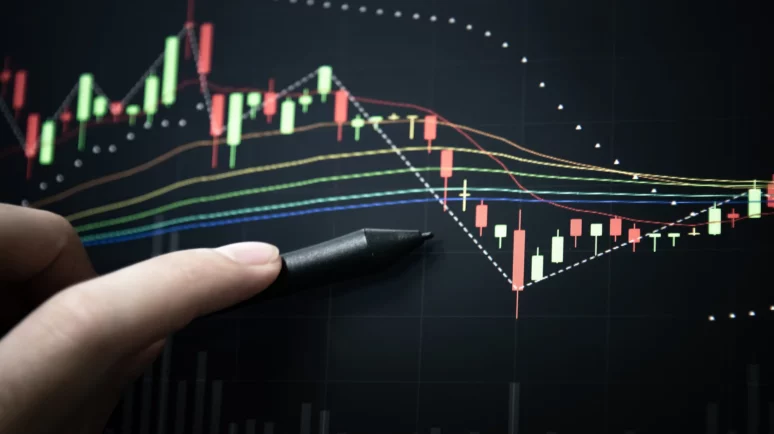In the rapidly evolving world of cryptocurrency trading, terms like “crypto pips” are increasingly gaining attention. For those venturing into the crypto market, understanding such terms is crucial for effective trading and investment strategies. This guide will explore what crypto pips are, how they are calculated, their significance in trading, and some advanced considerations.
What Are Crypto Pips?
In traditional forex trading, a “pip” stands for “percentage in point” or “price interest point” and represents the smallest movement in the exchange rate of a currency pair. It is a fundamental unit of measurement used to gauge changes in currency pairs and to calculate potential profits or losses. In the context of cryptocurrency trading, the concept of pips is adapted to measure the smallest price movement of a cryptocurrency.
A crypto pip is essentially the smallest incremental change in the price of a cryptocurrency, similar to how pips work in forex. While the exact value of a pip can vary depending on the cryptocurrency and the trading platform, it generally represents a minuscule change in price that traders monitor to make informed decisions.
How Are Crypto Pips Calculated?

The calculation of crypto pips can differ depending on the trading platform and the cryptocurrency being traded. However, the general approach remains consistent. Here’s a step-by-step guide on how to calculate crypto pips:
- Identify the Decimal Places: Cryptocurrencies are typically quoted to several decimal places. For example, Bitcoin (BTC) might be quoted to 8 decimal places, while Ethereum (ETH) might be quoted to 18 decimal places.
- Determine the Pip Value: In traditional forex, one pip is often equal to 0.0001 for most currency pairs. In the crypto market, the value of a pip can be much smaller due to the high volatility and the precision of cryptocurrency prices. For instance, if a cryptocurrency like BTC is quoted to 8 decimal places, a movement of 0.00000001 BTC might be considered one pip.
- Calculate the Pip Change: To determine the pip change, subtract the previous price from the current price. For example, if BTC was trading at $45,000.00000000 and is now trading at $45,000.00000001, the pip change would be 0.00000001 BTC.
- Convert to USD: If you want to calculate the pip value in USD, multiply the pip change by the current price of the cryptocurrency. For example, if the pip change is 0.00000001 BTC and the current price of BTC is $45,000, the pip value in USD would be $0.00000001 × $45,000 = $0.00045.
Why Are Crypto Pips Important?
Understanding and monitoring crypto pips is essential for several reasons:
- Precision in Trading: Crypto pips allow traders to gauge the smallest price movements with precision. This is particularly important in a market as volatile as cryptocurrency, where even minor changes can significantly impact trading outcomes.
- Risk Management: By tracking pips, traders can better manage their risk. Knowing the value of a pip helps traders set stop-loss orders and take-profit levels more effectively, ensuring they can limit potential losses and secure gains.
- Profit and Loss Calculation: Accurate pip calculation aids in determining profits and losses. For example, if a trader buys 1 BTC at $45,000 and the price increases by 1 pip (0.00000001 BTC), the profit can be calculated using the pip value.
- Strategy Development: Experienced traders use pip movements to develop and refine their trading strategies. By analyzing historical pip data, traders can identify patterns and make more informed decisions about when to enter or exit trades.
Advanced Considerations

- Impact of Volatility: Cryptocurrencies are known for their high volatility. This means that the value of a pip can fluctuate rapidly, influencing trading decisions. Traders must be aware of market conditions and adjust their strategies accordingly.
- Leverage and Margin Trading: Many cryptocurrency exchanges offer leverage, which allows traders to control larger positions with a smaller amount of capital. Understanding how pips affect leveraged trades is crucial, as small pip movements can result in significant gains or losses.
- Automated Trading Systems: Some traders use automated trading systems or bots to execute trades based on pip movements. These systems can monitor multiple cryptocurrencies and execute trades at high speeds, potentially taking advantage of minute price changes.
- Cross-Asset Comparisons: While the concept of pips is commonly used in forex and crypto trading, it can also be applied to other asset classes. Understanding how pips work across different markets can provide a broader perspective on trading strategies.
- Psychological Impact: Small pip movements can also have a psychological impact on traders. Understanding and managing this aspect can help in maintaining discipline and making rational decisions, rather than reacting impulsively to minor price changes.
Crypto pips play a crucial role in the world of cryptocurrency trading, providing traders with a means to measure and respond to the smallest price movements. By understanding how crypto pips are calculated and their significance, traders can enhance their trading strategies, manage risk more effectively, and make better-informed decisions in the volatile crypto market. As with any trading concept, continuous learning and practice are key to mastering the use of crypto pips and achieving success in the cryptocurrency trading arena.
Whether you are a seasoned trader or a newcomer to the crypto market, grasping the concept of crypto pips is fundamental for navigating the complexities of cryptocurrency trading. With a solid understanding of pips, you can better manage your trades, optimize your strategies, and make more informed decisions in this dynamic and exciting market.

